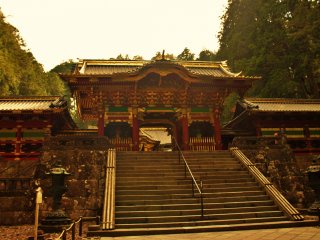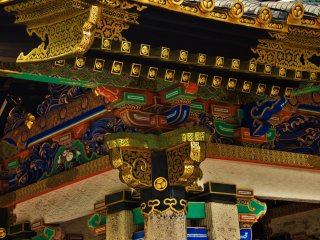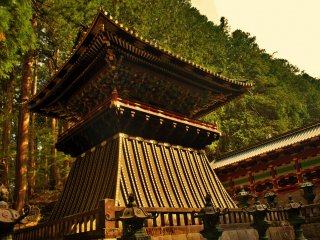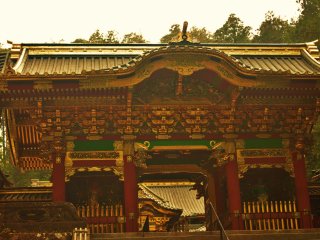The Taiyu-in Reibyō is the shrine and mausoleum of Iemitsu, 3rd Tokugawa Shogun. Just a few minutes walk from the main Tosho-gu shrine in Nikko, the final resting place of Lord Tokugawa Iemitsu is an amazing example of Nikko-bori (Nikko wood carving style). Construction of the shrine was started in 1652. Today Taiyu-in is administered by the Rinnō-ji Temple and is one of the UNESCO World Heritage sites in Nikko. Although smaller than its neighboring Tosho-gō shrine, Taiyu-in is in no way lessened in its beauty. Taiyu-in is a stunning monument to the third lord of the Tokugawa dynasty. Take a closer look at the elaborate details, carvings, and color.
Taiyu-in Reibyō Mausoleum in Detail
A closer look at the tomb of Shogun Tokugawa Iemitsu

Por Dale A. Brown
Community writer
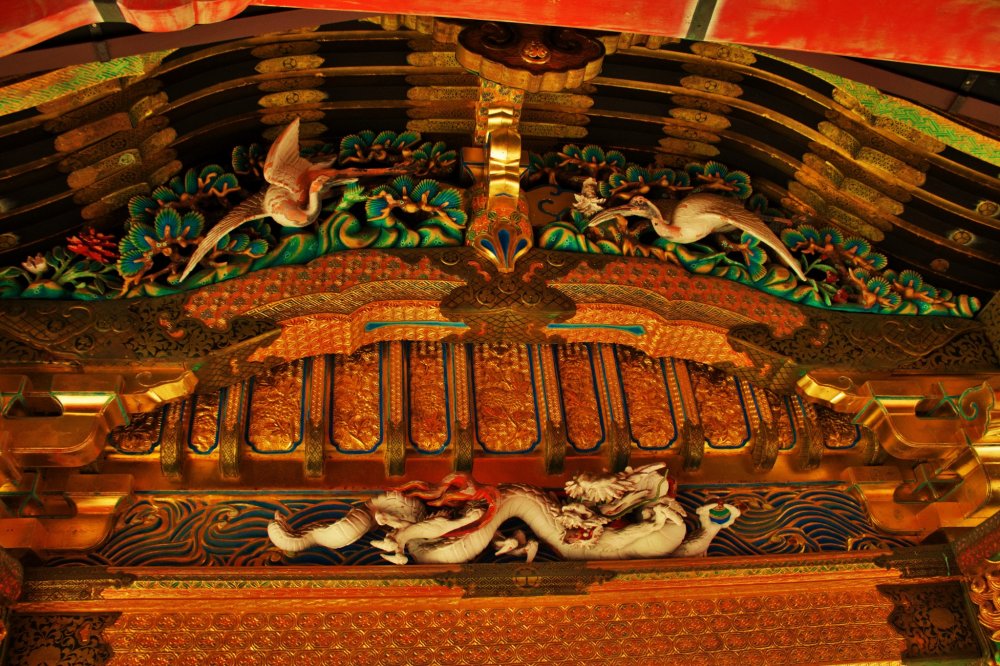
The main entrance to the Haiden, or worship hall.
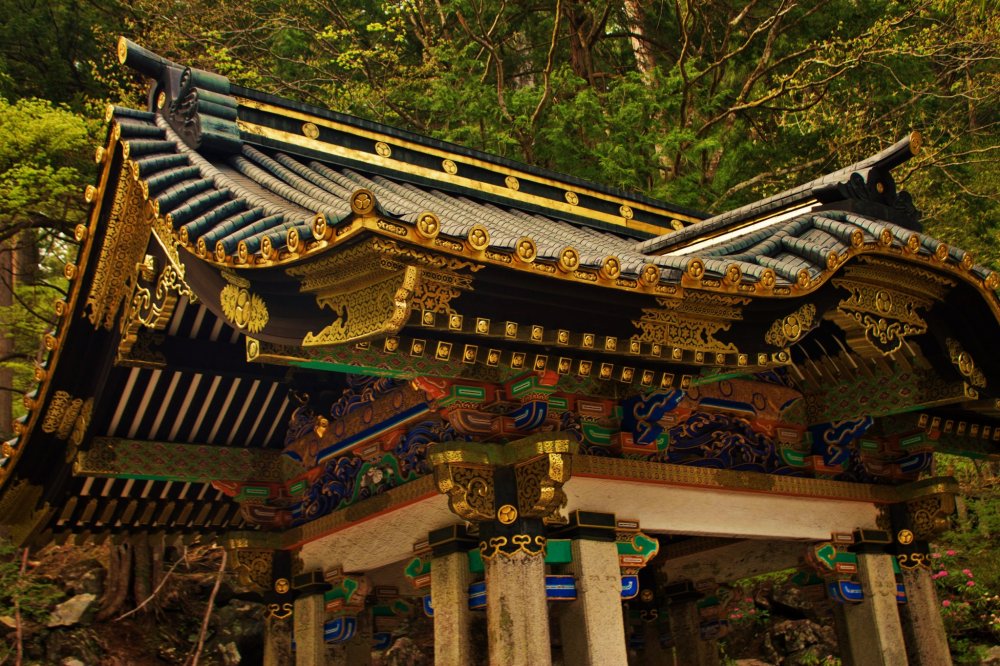
Suiban-sha of Taiyuin, an ornately decorated sacred fountain where visitors cleanse their hands and mouth before entering the temple.

Yashamon Gate of Taiyu-in Reibyō Mausoleum.

Another view of Suiban-sha of Taiyuin.

This is the Shoro, or Bell Tower. One of the two towers that flank the Yashamon Gate.

Entering the Yashamon Gate, the third gate of Taiyu-in houses four statues of Yasha demons, each colored to represent the four winds (North, South, East, and West) who stand guard. The gate is also known as Botanmon gate because of the display of peony in the carvings throughout the gate.

Entering the Yashamon Gate.

Entering the Yashamon Gate.

Entering the Yashamon Gate, one of the guardian Yasha demons.

Entering the Yashamon Gate, one of the guardian Yasha demons.

Entering the Yashamon Gate, one of the guardian Yasha demons.

Entering the Yashamon Gate, one of the guardian Yasha demons.

The ceiling of the Yashamon gate, which highlights the peony theme that the gate is known for.

The inner doors of the Yashamon gate.

The main entrance to the Haiden, or worship hall.

This is the exterior of the passage way between the Haiden (worship hall) and the Honden (inner shrine).

This is the Honden (inner shrine).

Close up of the Honden.

This is the Ryugu-mon gate, that leads to the sacred resting place, which is closed to the public.

This is the Sukibei, the latticework fence that encloses the Haiden and Honden of the outer shrine.
Explorar nas proximidades
Deixar um comentário
0 comentários no total
Reserve a sua viagem
Find a nearby hotel
Explore some of the best nearby hotels and deals for the perfect place to stay in Japan.
-
![Top 10 Locais no Japão inspirados no Studio Ghibli Top 10 Locais no Japão inspirados no Studio Ghibli]() 1
1Top 10 Locais no Japão inspirados no Studio Ghibli
Cultura -
![Guia para Terramotos no Japão Guia para Terramotos no Japão]() 2
2Guia para Terramotos no Japão
Plano -
![Igreja Católica de Nossa Senhora de Akita Igreja Católica de Nossa Senhora de Akita]() 3
3Igreja Católica de Nossa Senhora de Akita
Akita -
![Guia para Tufões no Japão Guia para Tufões no Japão]() 4
4Guia para Tufões no Japão
Plano -
![A Casa de Satsuki e Mei A Casa de Satsuki e Mei]() 5
5A Casa de Satsuki e Mei
Aichi -
![8 Melhores Locais para Correr em Tóquio 8 Melhores Locais para Correr em Tóquio]() 6
68 Melhores Locais para Correr em Tóquio
Tóquio -
![O Castelo Original de Matsumoto O Castelo Original de Matsumoto]() 7
7O Castelo Original de Matsumoto
Nagano -
![Caminhando pelo Belo Vale Kaeda Caminhando pelo Belo Vale Kaeda]() 8
8Caminhando pelo Belo Vale Kaeda
Miyazaki -
![Jardins do Este do Palácio Imperial Jardins do Este do Palácio Imperial]() 9
9Jardins do Este do Palácio Imperial
Tóquio -
![Parque Nacional de Shiretoko Parque Nacional de Shiretoko]() 10
10Parque Nacional de Shiretoko
Hokkaido
-
![Guia para Tufões no Japão Guia para Tufões no Japão]() 1
1Guia para Tufões no Japão
Plano -
![Gion Matsuri - Festival de Gion Gion Matsuri - Festival de Gion]() 2
2Gion Matsuri - Festival de Gion
Quioto -
![Top 10 Locais no Japão inspirados no Studio Ghibli Top 10 Locais no Japão inspirados no Studio Ghibli]() 3
3Top 10 Locais no Japão inspirados no Studio Ghibli
Cultura -
![O Fantástico Vale Atera O Fantástico Vale Atera]() 4
4O Fantástico Vale Atera
Nagano -
![Tokyo Game Show (TGS) Tokyo Game Show (TGS)]() 5
5Tokyo Game Show (TGS)
Chiba -
![Aeroporto, Museu de Aviação, Sendai Aeroporto, Museu de Aviação, Sendai]() 6
6Aeroporto, Museu de Aviação, Sendai
Miyagi -
![Festival de Lanternas Nara Tokae Festival de Lanternas Nara Tokae]() 7
7Festival de Lanternas Nara Tokae
Nara -
![Pagode Chureito, Fujiyoshida Pagode Chureito, Fujiyoshida]() 8
8Pagode Chureito, Fujiyoshida
Yamanashi -
![Pagode do Templo To-ji Pagode do Templo To-ji]() 9
9Pagode do Templo To-ji
Quioto -
![A Floresta de Bambu de Arashiyama A Floresta de Bambu de Arashiyama]() 10
10A Floresta de Bambu de Arashiyama
Quioto


